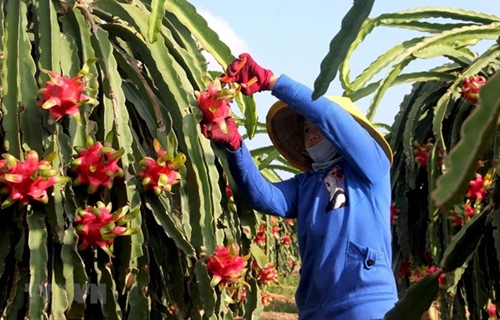April 13, 2020 | 16:48 (GMT+7)
Fruit, vegetable exports reach USD 836 million in Q1
Vietnam exported USD 836 million worth of fruits and vegetables in the first quarter of 2020, a year-on-year decline of 10.9 percent, according to the Ministry of Agriculture and Rural Development.
The decrease was seen in main products such as dragon fruit, banana, longan, watermelon, durian and shiitake.
China continued to take the lead in importing Vietnam’s fruit and vegetable with over USD 300 million, down 29.4 percent compared to the same period last year. The sharp decline was attributed to the COVID-19 pandemic.
    |
 |
|
A farmer is harvesting dragon fruits |
Meanwhile, other markets recorded slight year-on-year growth in January-March such as Indonesia with USD 2.1 million compared to only USD 164,800 in the same period in 2019, Thailand USD 35.2 million as against USD 7.6 million one year ago, Laos USD 9.6 million compared to USD 2.6 million last year, Russia USD 8.2 million against USD 2.4 million in the same period last year, and Cambodia USD 885,300 from USD 340,000 from one year ago.
Last year, fruit and vegetable exports lagged behind expectations, reaching only USD 3.8 billion, a year-on-year drop of one percent.
According to the Ministry of Industry and Trade, 2019 was a tough year for the sector. China, the country’s largest importer, tightened requirements for imports from Vietnam via strict quarantine measures and origin traceability.
However, growth was seen in shipments to several markets such as ASEAN (26.6 percent), the US (10.7 percent) and the European Union (32.2 percent).
Source: VNA